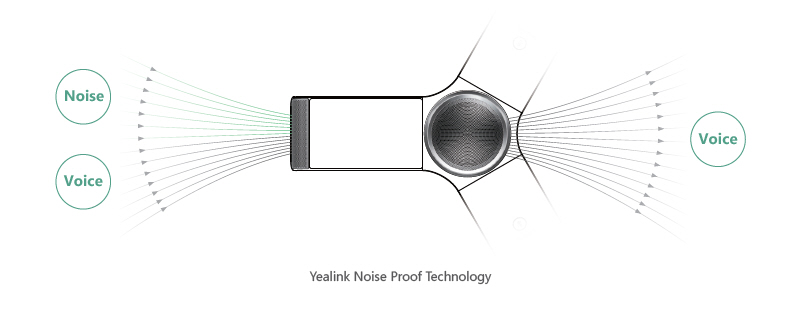Introduction
In today’s fast-paced digital landscape, businesses are continuously seeking innovative solutions to enhance communication. Voice over Internet Protocol (VoIP) phone systems have emerged as a game-changer in this realm, offering flexibility, cost-effectiveness, and superior features compared to traditional telephony. But what happens when artificial intelligence (AI) enters the picture? The integration of AI into VoIP phone systems is not merely an upgrade; it's a revolution that transforms how organizations communicate internally and with customers. In this article, we’ll explore the myriad ways AI integrations are revolutionizing modern VoIP phone systems, illustrating the profound impact on productivity, customer service, and overall business efficiency.
What is a VoIP Phone System?
Understanding Voice Over Internet Protocol
A VoIP phone system utilizes the internet for voice communications instead of traditional telephone lines. This technology converts voice signals into data packets, transmitting them over broadband connections.
Key Features of VoIP Phone Systems
- Cost Savings: Lower call rates and reduced infrastructure costs. Flexibility: Users can make and receive calls from any location with internet access. Scalability: Easily add or remove lines based on business needs. Advanced Features: Call forwarding, voicemail-to-email, video conferencing, etc.
How Does VoIP Work?
When you speak into a VoIP phone, your voice gets digitized and compressed into data packets. These packets travel through the internet to the recipient’s device, where they https://sethcnfw966.mystrikingly.com/ get converted back into sound. This process allows for seamless real-time communication across vast distances.
The Role of AI in Modern Communication
Defining Artificial Intelligence
Artificial Intelligence refers to computer systems capable of performing tasks that typically require human intelligence. These tasks include learning from experience, reasoning, problem-solving, understanding natural language, and recognizing patterns.

The Intersection of AI and Telecommunications
As companies strive to enhance their customer engagement strategies, integrating AI within telecommunications presents an unparalleled opportunity to redefine service delivery.
How AI Integrations are Revolutionizing Modern VoIP Phone Systems
The integration of AI into VoIP phone systems is reshaping communication paradigms across industries. Here’s how:
Enhanced Customer Support- With AI-driven chatbots and virtual assistants integrated into VoIP platforms, companies can provide 24/7 support without increasing staffing costs.
- Advanced analytics powered by AI can analyze call data in real-time to offer insights on call duration trends, peak calling times, and more.
- By leveraging machine learning algorithms to analyze customer interactions over time, businesses can tailor experiences based on individual preferences or behaviors.
- Businesses can automate outgoing calls using predictive dialing technology that analyzes data patterns to increase connect rates.
- AI-powered transcription tools convert voice calls into text automatically for documentation purposes—saving time and improving record accuracy.
- Advanced AI algorithms can monitor calling patterns for anomalies indicative of fraud—offering protection against financial losses.
- Real-time translation features facilitate communication between multilingual stakeholders—breaking down language barriers.
- Intelligent call routing directs incoming calls to the most appropriate department or personnel based on contextual analysis of caller information.
Each of these elements illustrates how AI is not just an enhancement but a fundamental shift in operational capabilities for both small businesses and large enterprises alike.
Benefits of Integrating AI with VoIP Phone Systems
Cost Efficiency
Integrating AI with your VoIP phone system dramatically reduces operational costs by streamlining processes that traditionally required human intervention.
Improved Communication Quality
AI ensures high-quality connections by optimizing bandwidth usage in real-time—reducing latency issues often associated with traditional telephony.
Increased Productivity
With automated processes handling routine tasks like call capturing and follow-ups, employees can focus on high-value activities that drive growth.
Enhanced Data Security
AI technologies continuously monitor network activity for potential security threats—providing businesses peace of mind regarding sensitive communications.
Challenges in Integrating AI with VoIP Phone Systems
Technical Complexity
Integrating sophisticated AI solutions requires robust technical expertise—a challenge for many organizations lacking dedicated IT resources.
Data Privacy Concerns
With increased data collection comes heightened scrutiny regarding user privacy—businesses must navigate legal frameworks carefully while implementing new technologies.
Dependence on Internet Connectivity
VoIP relies entirely on internet connectivity; thus any outages could jeopardize business communications—even with advanced AI integrations in place.
FAQs About AI Integration in VoIP Phone Systems
1. What types of businesses benefit from integrating AI in their VoIP systems?
Almost any business looking to improve efficiency and customer experience can benefit—especially those with high call volumes or complex customer interactions such as tech support centers or sales teams.
2. Is it expensive to implement an AI-integrated VoIP phone system?
While initial investments may seem significant due to advanced software requirements and integration costs, long-term savings from enhanced efficiency often outweigh these expenses significantly.
3. Can small businesses afford smart voicemail systems powered by AI?
Absolutely! Many service providers offer scalable solutions tailored specifically for small businesses at competitive prices without sacrificing functionality or performance quality.
4. How does machine learning improve call routing?
Machine learning algorithms analyze historical data about previous calls (e.g., duration or outcome) enabling smarter decision-making when routing future contacts ensuring higher success rates!
5. Are there risks involved in using automated services like chatbots?
Yes! While beneficial overall; automation may sometimes struggle with nuanced queries leading frustrated customers if not designed effectively—human oversight remains essential!
6. Will my current hardware work seamlessly with new software applications?
Most modern hardware supports contemporary software developments but check compatibility specifications beforehand; upgrades might be necessary depending upon age/type!
Conclusion
The fusion of artificial intelligence within modern VoIP phone systems marks a pivotal shift towards more intelligent communication networks where efficiency reigns supreme! From enhancing customer experiences through personalized engagements to providing actionable insights via advanced analytics—AI has unlocked untold possibilities for businesses globally! As we move forward into this brave new world shaped by innovation; embracing these advancements isn’t just recommended—it’s imperative! Don’t let your organization lag behind; stay ahead by adopting cutting-edge technologies that will redefine how you connect!